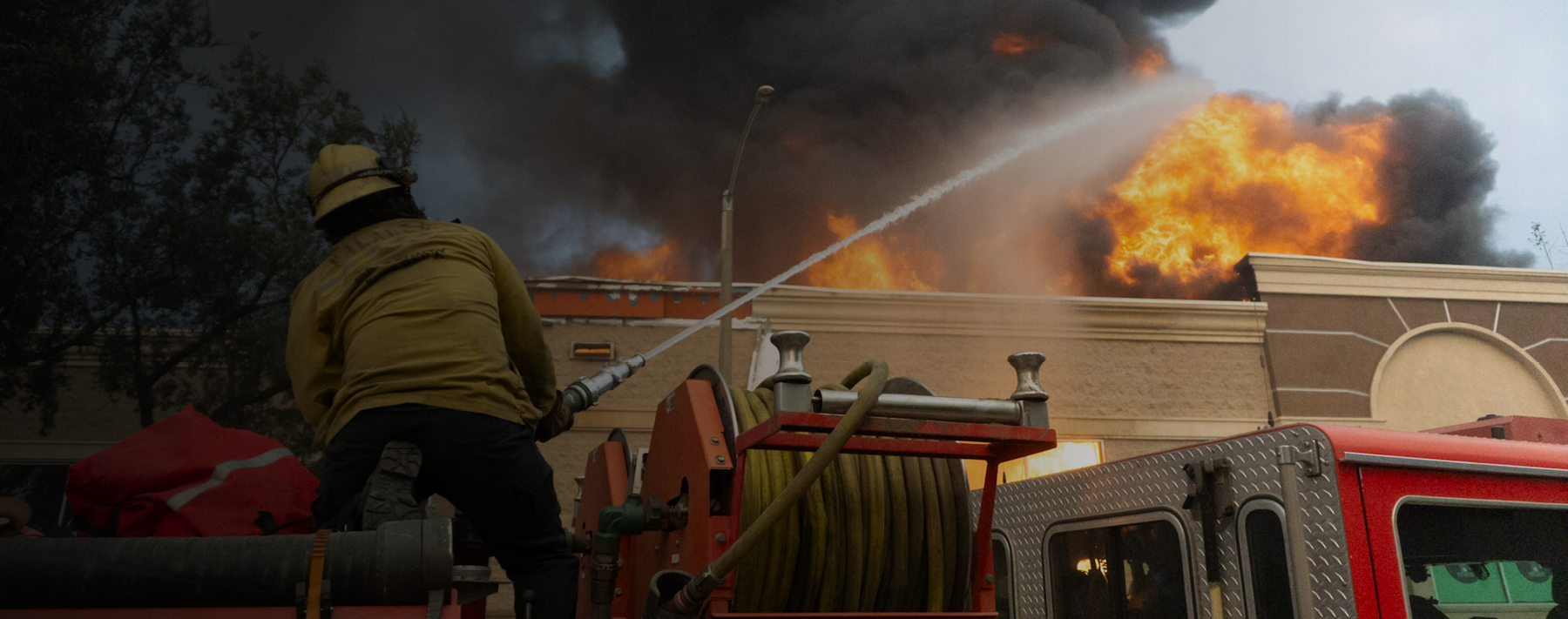As the first-due engine arrives, the captain can see Mrs. Smith waiting anxiously outside her house. Light smoke is venting from a first-floor window. The engine operator positions the apparatus, the crew begin to stretch a line and the captain talks with Mrs. Smith, who tells him her dog is still in the home, most likely upstairs. As the captain completes his 360-degree assessment, the first-due truck arrives, followed shortly by the second-due engine and a battalion chief. Within minutes, crews have water on the fire. The primary search turns up Mrs. Smith’s chihuahua, obliviously asleep upstairs.
This is a common scenario in fire departments across the country. A resident has a fire or emergency medical situation and calls 9-1-1, call intake information is gathered, the tones go off, crews are dispatched, and firefighters turn out and arrive on scene to mitigate the situation. But hidden among these everyday actions are hundreds of data points, important clues to understanding whether the department has enough resources to address emergencies in the community.
In the first two articles in this series, we discussed using data to demonstrate fire department value and using data to identify the risks facing your community. The third key area of data usage involves measuring operational performance—specifically, the tasks that occur every time someone calls 9-1-1, including call intake, call processing, firefighter turn out, total response times and time to first intervention.
Fire department response times—for first-due units and for the total effective response force—provide valuable information for resource allocation decisions such as fire station location, apparatus deployed and crew size/staffing levels. For example, if a department experiences many hours in a day where a significant percentage of overall resources are engaged on assignment in the same neighborhood, it may leave other neighborhoods at greater risk since resources are displaced outside their immediate response zone, causing longer response times for units responding from further distances. This high volume of incidents and frequency of overlapping incidents experienced may lead department administrators to conclude the department requires additional resources to provide effective and efficient emergency response.
If fire department response times and force assembly times are low, it is more likely sufficient resources have been deployed, which is associated with more positive outcomes from risk events.
The relationship between deployment of resources, response time and positive outcomes is circular. If fire department response times and effective response force assembly times are low, it is more likely that sufficient resources have been deployed, which is associated with more positive outcomes from risk events. Conversely, if response times and effective response force assembly times are high, it is more likely that insufficient resources have been deployed, which is associated with more negative outcomes.
Breaking Down Emergency Response
There are three basic components of fire department emergency response performance:
- Availability—The degree to which the resources are ready and available to respond.
- Capability—The abilities of deployed resources to manage an incident.
- Operational Effectiveness—A product of availability and capability. It is the outcome achieved by the deployed resources or the ability to match resources deployed to the risks to which they are responding.
How do fire departments accurately evaluate their response in these three areas? NFPA 1710: Standard for the Organization and Deployment of Fire Suppression Operations, Emergency Medical Operations, and Special Operations to the Public by Career Fire Departments establishes criteria that provide a good place to start. Those criteria include:
- Alarm Answering Time: 15 seconds for 95% of calls; 40 seconds for 99% of calls
- Alarm Processing Time: 64 seconds for 90% of calls; 106 seconds for 95% of calls
- Turnout Time: 60 seconds for EMS responses; 80 seconds for fire responses
- First Engine Arrive on Scene Time: 240 sec (4 minutes) for 90% of responses with a minimum staffing of 4 personnel
- Second Company Arrive on Scene Time: 360 seconds (6 minutes) for 90% of responses with a minimum staffing of 4 personnel
- Initial Full Alarm – Low and Medium Hazard Assembly Time: 480 seconds (8 minutes) on 90% of responses
- Initial Full Alarm – High Hazard/High-Rise Assembly Time: 610 seconds (10 minutes 10 seconds) on 90% of responses
Although NFPA 1710 provides essential benchmarks, fire departments often measure baseline performance in terms of total response time, which is the time it takes from the call to be received at the Public Safety Answering Point (PSAP) until the first unit arrives on the scene of the emergency incident. Total response time should be measured and reported for all first-due units and the effective response force (ERF) assembly. Total response time is composed of call-processing time, turnout time and travel time:
- Call processing time – the elapsed time from the call being received at the PSAP to the dispatching of the first unit.
- Turnout time – the elapsed time from when a unit is dispatched until that unit changes their status to “responding.”
- Travel time – the elapsed time from when a unit begins to respond until its arrival on the scene.
All these data elements are captured in the National Fire Operations Reporting System (NFORS). Fire departments using NFORS have access to a live interactive dashboard that can make raw data usable in operational decision-making. Visit https://i-psdi.org/nfors.html for more information.
Additional Data
Emergency response performance metrics provide a foundation for assessing fire department performance, but there are numerous other data elements to consider.
Resources responding includes all mobile resources dispatched to an incident. The frequency of response can also be determined for each unit.
Staffing/Crew Size is a measurable objective in NFPA 1710 and is an important determinant in assembling an effective response force on scene. Crew size also determines which tasks can be accomplished once a unit arrives on scene. For example, a first-in engine with three-person crew cannot engage in interior firefighting until a second unit arrives to accomplish the OSHA requirement for two-in and two-out. While two-in/two-out is well understood within the fire service, decision-makers at the municipal level may not fully understand the requirement’s impact on operations and therefore the impact of crew size reductions on fire department performance.
Emergency response performance metrics provide a foundation for assessing fire department performance, but there are numerous other data elements to consider.
First Unit Arrival denotes the first-arriving fire department vehicle with the potential to intervene in the situation and curtail or stop the escalation of the incident. In the absence of on-scene task times, if crew size and structure type are known, first unit arrival time can be used as a proxy for estimation of tasks like water-on-fire time.
Initial Alarm Arrival (Assembly of Effective Response Force)—Given expected on-scene conditions, the number of on-duty members sent in an initial alarm should be determined through task analysis considering life hazard protected population, safe and effective performance, potential property loss, hazard levels of properties and tactics employed. The timing of the complete assembly of these forces is significant in ensuring risk control tasks can be implemented in a timely and effective manner. For example, on the fireground, coordinating ventilation with water on the fire is an absolute and requires enough personnel to complete.
Intervention time is the time that responders arriving on scene engage to stop the emergency. For EMS, this time is typically when the responders are at a patient’s side. For fire response, this time may be documented as water on fire time, given that this intervention time is a critical indicator of operational performance and stopping risk escalation.
Decisions Require Data
In today’s ever-changing economy, local government decision-makers often alter emergency response resources faster than fire service leaders can evaluate the potential impact. These whirlwind decisions can leave a community without enough resources to respond to emergency calls safely, efficiently and effectively. The effects of uninformed decision-making can have even greater impact on vulnerable populations including the elderly, young children and people with disabilities.
It is imperative firefighters and fire department leaders, as well as political decision-makers, understand how fire department response and performance times affect their local community. The right data is key to building that understanding.




